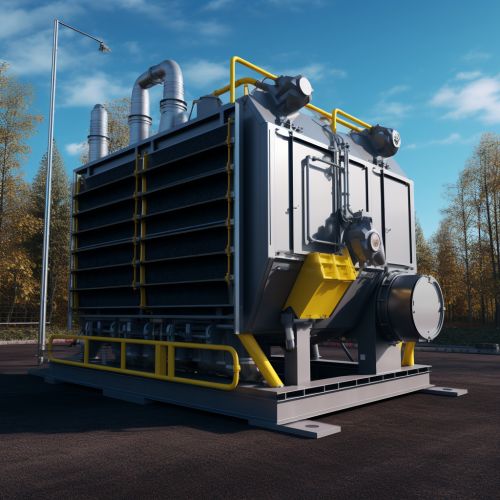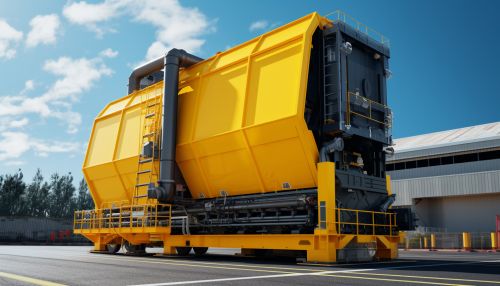Electrostatic precipitator
Introduction
An electrostatic precipitator (ESP) is a filtration device that removes fine particles, like dust and smoke, from a flowing gas using the force of an induced electrostatic charge minimally impeding the flow of gases through the unit.
Principle of Operation
In contrast to wet scrubbers, which apply energy directly to the flowing fluid medium, an ESP applies energy only to the particulate matter being collected and therefore is very efficient in its consumption of energy (in the form of electricity).
Design and Operation
ESP systems can be designed to meet stringent particulate emission standards with minimal impact on operation and maintenance requirements for the overall dust collection system. They can handle large volumes of air without significantly slowing down the rate of flow, due to the low pressure drop across the electrostatic filter.


Components of an Electrostatic Precipitator
An ESP system typically consists of the following components:
- Power supply unit to provide the required voltage.
- Ionizing section where the dust particles are ionized.
- Collecting section where the ionized dust particles are collected.
- Hopper for the collection and temporary storage of the collected dust particles.
- Rapping system to remove the collected dust particles from the collecting plates.
- Shell or casing to enclose all the above components.
Types of Electrostatic Precipitators
Based on the direction of the gas flow, electrostatic precipitators can be categorized into two types:
- Plate Precipitators - The most commonly used type of ESP.
- Tubular Precipitators - These are generally used for removing liquid droplets, for instance, in desulfurization of flue gas.
Applications of Electrostatic Precipitators
Electrostatic precipitators have a wide range of applications in industries that emit particulate pollutants. These include:
- Power plants
- Cement factories
- Steel mills
- Paper mills
- Glass production
- Textile mills
- Chemical and pharmaceutical industries
Advantages and Disadvantages of Electrostatic Precipitators
Like any other industrial equipment, electrostatic precipitators have their advantages and disadvantages.
Advantages
- High collection efficiency of up to 99%
- Ability to handle large volumes of air flow
- Low pressure drop, resulting in low energy consumption
- Ability to operate at high temperatures and pressures
- Collection of both dry and wet particles
Disadvantages
- High initial cost
- High maintenance and operating costs
- Inefficiency in collecting very small particles
- Inefficiency in the presence of high resistivity dust
